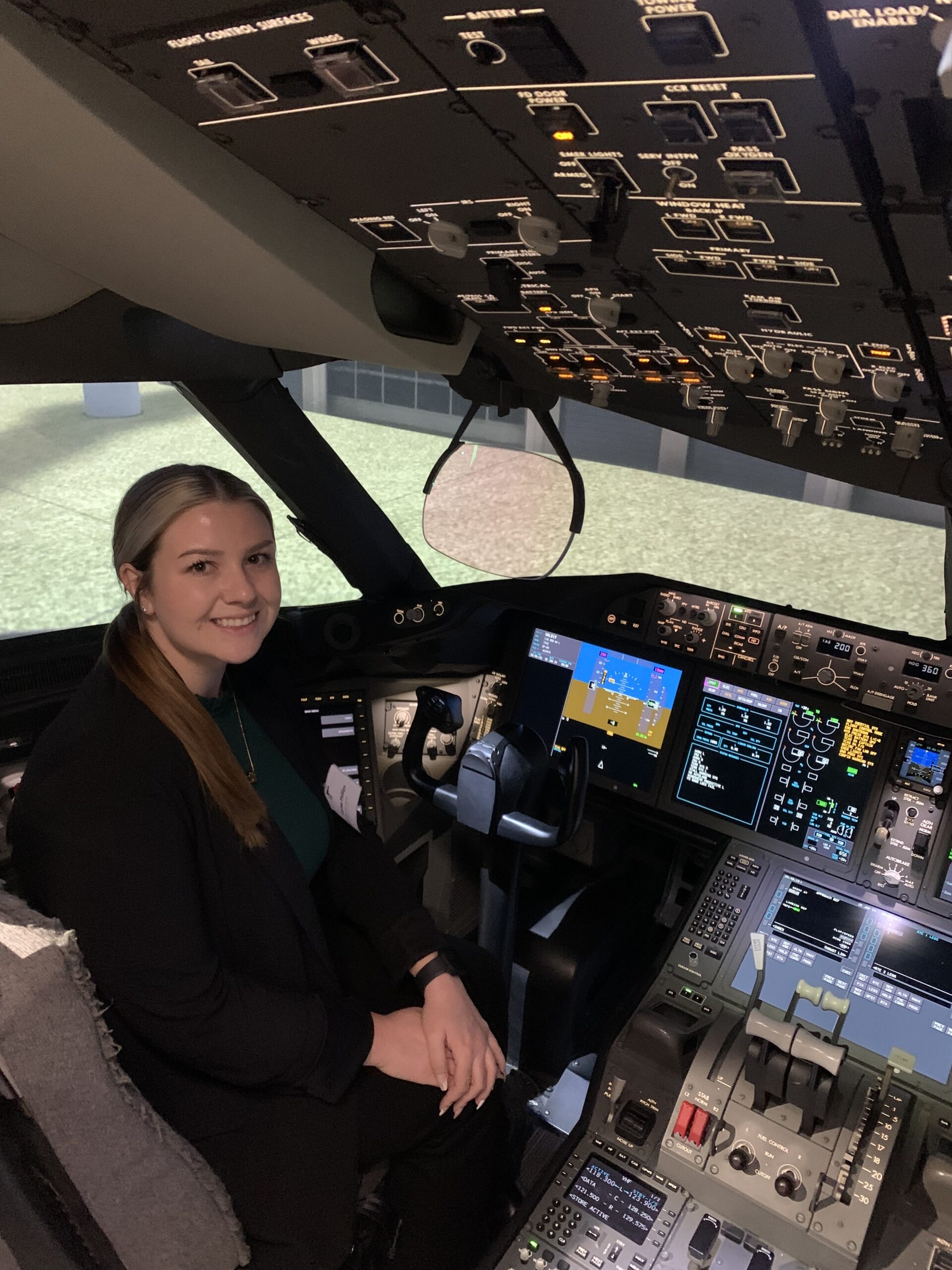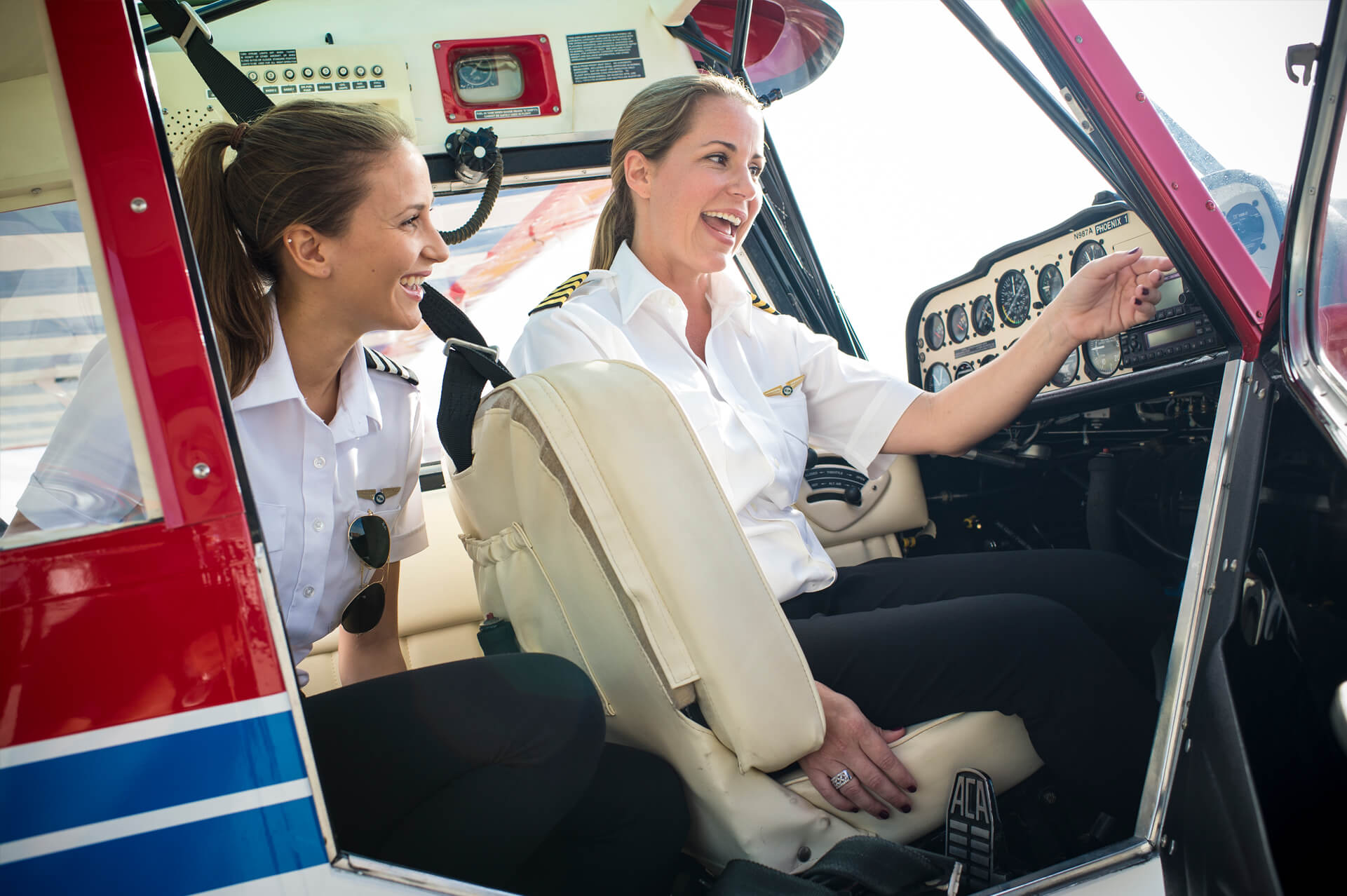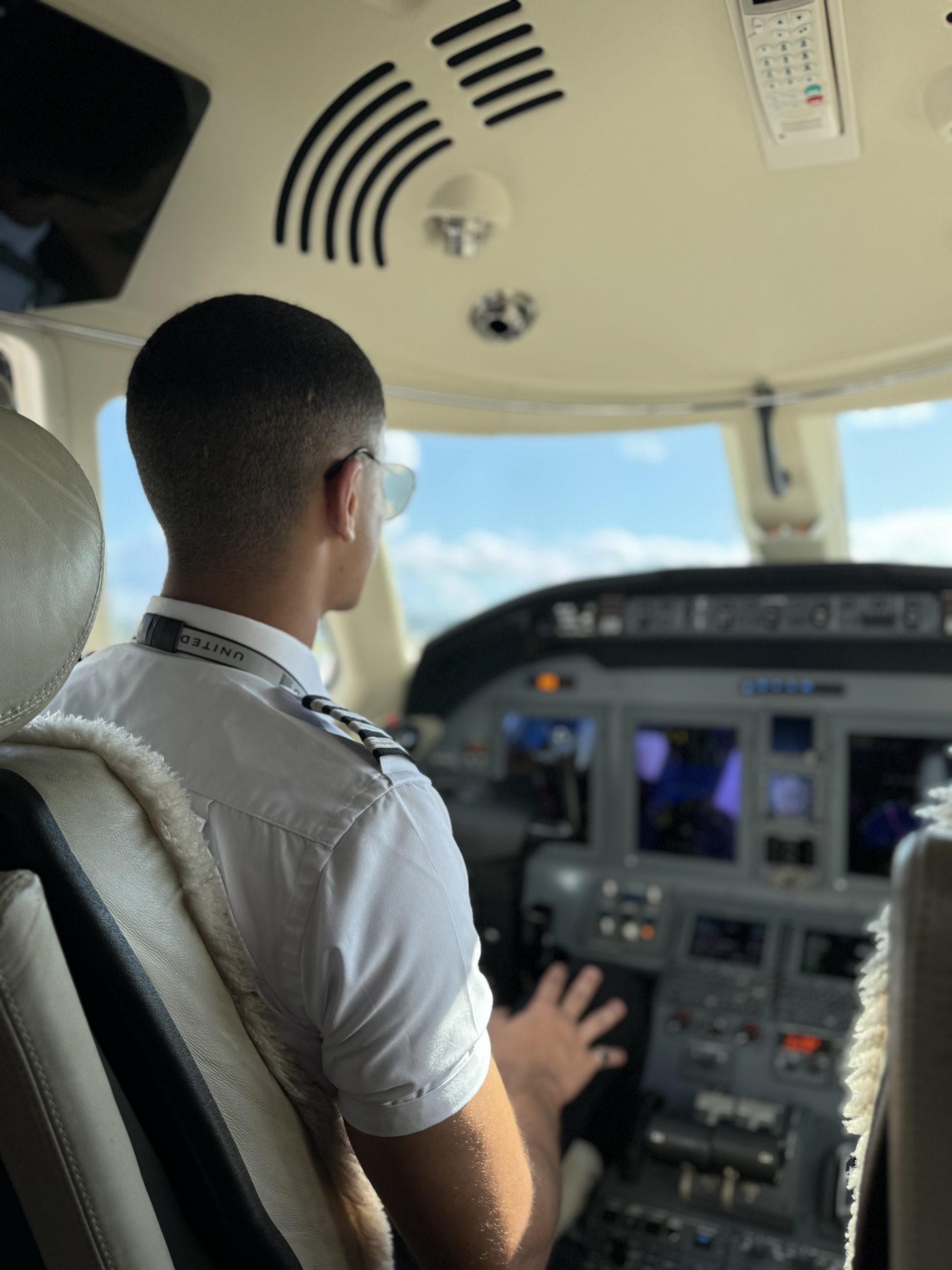Basic Private Pilot Knowledge Everyone Should Know
Flying an aircraft is an experience that captures the imagination of many, and understanding some fundamental concepts of aviation is essential for all aspiring pilots. Let’s delve into the fundamentals of flight, exploring aircraft categories, the intricacies of airplane structure, the four forces of flight, and the distinctions between the four types of airspeed that pilots must understand.
Aircraft Category, Class, and Type
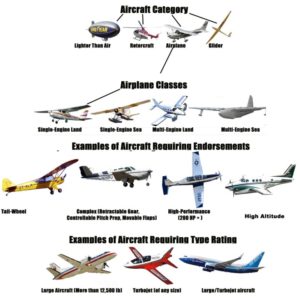 The aviation industry is filled with an array of terms that pilots add to their vocabulary to add richness to their understanding. Among these are the distinctions between aircraft category, class, and type – concepts that reveal the variety and specialization within aviation. Exploring these classifications not only enhances one’s appreciation for aircraft design, but also provides valuable insight into the skills and knowledge required to fly various types of aircraft.
The aviation industry is filled with an array of terms that pilots add to their vocabulary to add richness to their understanding. Among these are the distinctions between aircraft category, class, and type – concepts that reveal the variety and specialization within aviation. Exploring these classifications not only enhances one’s appreciation for aircraft design, but also provides valuable insight into the skills and knowledge required to fly various types of aircraft.
Category
Aircraft categories, established by the Federal Aviation Administration (FAA) and other global aviation organizations, provide a broad classification system that groups aircraft with similar characteristics and intended uses. Take a look at the list below for some specific aircraft categories that may appear within the aviation industry:
- Airplanes;
- Gliders;
- Rotorcraft;
- Balloon.
Each of these are designed for specific operating environments and purposes.
Class
Aircraft classes provide a distinct classification system, and much like their categories, are established by the FAA. Think of an aircraft class as a “subdivision” to the category which was previously discussed. An aircraft class allows for a more precise categorization of aircraft, reflecting their operational capabilities and design features. This system helps aviation authorities make sure pilots are trained and certified for the right classes of aircraft.Aircraft classes provide a distinct classification system, and much like their categories, are established by the FAA. Think of an aircraft class as a “subdivision” to the category which was previously discussed. An aircraft class allows for a more precise categorization of aircraft, reflecting their operational capabilities and design features. This system helps aviation authorities make sure pilots are trained and certified for the right classes of aircraft.
Type
For pilots looking to expand their aviation experience and knowledge, understanding aircraft types is crucial. An aircraft type refers to a specific make and model of an aircraft, such as a Boeing 737 or Airbus A320. Each type has its own unique design, configuration, and capabilities.
The Federal Aviation Administration (FAA) uses these type definitions to determine the different qualifications pilots need to operate a particular aircraft safely. It is not just about being able to fly any plane, rather mastering the specifics of each aircraft type. Keep in mind, for an individual aspiring to fly for a commercial airliner, any aircraft weighing over 12,500 pounds, or any turbo-jet powered aircraft (regardless of its weight), requires a “type rating”. This is a specific privilege on an airman’s certificate, and involves rigorous training and demonstrates that a pilot has the necessary skills and knowledge to operate that particular aircraft safely.
The importance of understanding aircraft types and working toward type ratings is an exciting journey for pilots. It’s all part of the continuous learning and skill development that makes the aviation industry such a dynamic and rewarding field.
Airplane Structure
Airplanes come in various shapes and sizes and all share fundamental components that work together to achieve flight. The main structure of an airplane include the fuselage, wings, flight deck, engines, tail (empennage), and landing gear. Each of these elements plays a crucial role in the aircraft’s performance and safety, and understanding how these parts work together is the first step in grasping the principles of aerodynamics.
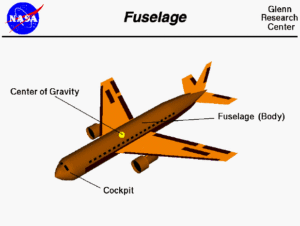
Fuselage
A Fuselage, or body of the airplane, is a long hollow tube that holds all the components of the aircraft together. It is designed to be hollow in order to reduce weight. As with most other parts of the airplane, the shape of the fuselage is typically determined by the mission of the aircraft.
Wings
The wings of an aircraft play a crucial role, serving a purpose similar to that of a bird’s wing – hence the name. As fixed-wing aircraft, airplanes rely on their wings to generate lift, enabling them to soar through the skies. The design of the wings, combined with the speed of the aircraft, creates the lift necessary for it to take flight.
Flight Deck
The flight deck is where the pilot sits to control the aircraft and includes its flight instruments, avionics, and radio communications, along with flight controls.
Engine
An aircraft’s engine is the main component of an aircraft’s propulsion system, or in other words, what generates thrust to propel the aircraft forward.
Propeller
A propeller is an aerodynamic device that transforms rotational energy into thrust, enabling an airplane to move forward. This thrust is generated perpendicularly to the plane of rotation and is produced by the propeller’s blades, which are evenly spaced around a central axis. Propellers typically feature two or more blades and can be designed with either a fixed pitch or variable pitch configuration, allowing for different performance characteristics.
Tail (Empennage)
The empennage, commonly known as the tail or tail assembly, is situated at the rear of an airplane and plays a crucial role in maintaining stability during flight. It ensures that the aircraft remains steady and well-balanced as it navigates through the skies. The tail consists of several components, including the vertical stabilizer, rudder, elevator, and horizontal stabilizer, all of which work together to enhance the aircraft’s performance and control.
Landing Gear
One of aviation’s most critical components, the landing gear, serves as a versatile system that extends far beyond its legitimate function, landing. The landing gear allows the aircraft to transition smoothly between air and ground. Most planes use regular wheels, but specialized aircraft, such as seaplanes, have innovative alternatives like floats allowing for a water landing. High-performance aircraft, particularly twin engine and jet configurations, have retractable landing gear. This mechanism allows for the wheels to be tucked away after takeoff, reducing aerodynamic drag and allowing the aircraft to achieve optimal flight efficiency.
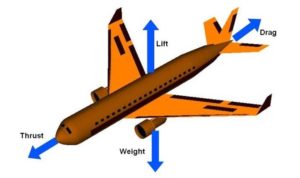
Forces of Flight
Flying relies on four fundamental forces that work against each other in a constant balance: weight, lift, drag, and thrust. Understanding these forces is the foundation that allows pilots to predict and control their aircraft’s behavior, whether they are climbing to a cruising altitude or executing a perfect landing.
Weight
Weight is a force that consistently acts toward the center of the Earth, playing a crucial role in the aerodynamics of flight. The magnitude of this weight depends on several factors such as, but not limited to, the mass of all the airplane components, the fuel onboard, and anything additional such as passengers and baggage, or freight. While the weight is distributed throughout the aircraft, it can often be conceptualized as concentrated at a single point known as the center of gravity. During flight, the aircraft rotates around this center of gravity, influencing its stability and maneuverability.
Lift
To counteract the force of weight, airplanes generate an opposing force known as lift. Lift acts perpendicular to the direction of flight and its magnitude is influenced by several factors, including the wing’s shape, size, and velocity. Similar to weight, each part of the aircraft contributes to the overall lift. Most of this lift is produced by the wings. Lift is concentrated at a single point called the center of pressure, which is defined similarly to the center of gravity, but is based on the pressure distribution around the aircraft rather than its weight distribution.
Drag
As an airplane flies through the sky, it encounters another aerodynamic force known as drag. This resistance force opposes the aircraft’s motion and is directed along the flight path. Several factors influence the magnitude of drag, including the aircraft’s shape, the viscosity (or the property of fluid that causes air to resist flowing), and its speed. Just as with lift, the individual drag forces from various components of the aircraft are combined to determine the overall drag magnitude.
Thrust
To counteract drag, airplanes rely on a propulsion system to generate a force known as thrust. The direction of this thrust force varies based on how the engines are mounted to the aircraft. The magnitude of thrust is influenced by various factors related to the propulsion system, including the type and number of engines as well as the throttle setting. The aircraft’s motion through the air is determined by the relative strength and direction of the forces at play. When these forces are balanced, the aircraft maintains a constant velocity; however, if they are unbalanced, the aircraft will accelerate in the direction of the dominant force.
4 Types of Airspeed
Grasping the four different types of airspeed is both fascinating and essential for pilots. Understanding these concepts not only enhance a pilot’s knowledge, but also plays a crucial role in flight operations. The four types of airspeed include indicated airspeed (IAS), calibrated airspeed (CAS), true airspeed (TAS), and groundspeed (GS). Each of these airspeeds serves a unique purpose and contributes to a pilot’s ability to navigate and operate an aircraft safely, making them fundamental concepts in flight training.
Indicated Airspeed (IAS)
Indicated Airspeed (IAS) is the direct reading obtained from the Airspeed Indicator (ASI) in the flight deck. This value represents the speed of the aircraft as shown on the instrument, but it does not account for various factors that can affect its accuracy such as variations in atmospheric density, which can change based on altitude and temperature, as well as any installation errors that may arise from how the instrument is fitted within the aircraft. Understanding the limitations of indicated airspeed is imperative for pilots, as it ensures awareness of the potential discrepancies between what the instrument displays and the actual performance of the aircraft in flight.
Calibrated Airspeed (CAS)
Calibrated airspeed (CAS) is an essential concept for pilots, representing indicated airspeed (IAS) that has been corrected for both installation errors and instrument inaccuracies. While manufacturers strive to minimize these errors, it’s important to recognize that completely eliminating them across the entire range of airspeeds is not possible; at lower airspeeds and specific flap settings, the cumulative errors can amount to several knots, which can significantly impact flight performance and safety. The difference between IAS and CAS tends to diminish as the aircraft enters cruising speeds and higher airspeed ranges, making them nearly equivalent.
Equivalent Airspeed (EAS)
Equivalent Airspeed (EAS) refers to the Calibrated Airspeed (CAS) adjusted for the compressibility of air at significant Mach numbers. It represents the airspeed at sea level in the International Standard Atmosphere where the dynamic pressure matches that of the True Airspeed (TAS) at the aircraft’s current altitude. EAS is primarily utilized in structural calculations and testing, providing critical data for pilots.
True Airspeed (TAS)
True airspeed (TAS) is a critical measurement in aviation, representing equivalent airspeed (EAS) adjusted for both pressure altitude and nonstandard temperature. As pressure altitude increases, air density decreases, meaning an aircraft must travel faster to generate the same pressure difference between the pilot impact pressure and static pressure. Consequently, for a given EAS, the true airspeed increases with altitude; conversely, for a specific TAS, the EAS decreases as altitude rises. There are two primary methods in which a pilot can determine TAS. The most precise way is utilizing a conventional or electronic flight computer, which provides accurate calculations based on current flight conditions. Alternatively, a simple rule of thumb offers a quick estimation: pilots can add 2% to the EAS every 1,000 feet of altitude gained. Understanding true airspeed is essential for effective flight planning and filing accurate flight plans, as it allows pilots to account for the effects of altitude and temperature on their aircraft’s performance.
Groundspeed (GS)
Groundspeed (GS) is a vital measurement in aviation, representing the actual speed of an aircraft as it moves over the ground. Unlike airspeed, which reflects the aircraft’s performance through the air, groundspeed takes into account the effects of wind, making it a critical factor for navigation. Groundspeed is derived from true airspeed (TAS) adjusted for wind conditions. This means when flying into a headwind, the groundspeed decreases. However, when a plane is flying with a tailwind, its groundspeed increases, allowing it to cover distance quicker. By accounting for wind effects, pilots can make more accurate calculations and decisions, ensuring a smoother and more efficient flight experience. Ultimately, being aware of groundspeed allows pilots to navigate effectively and manage their flight operations with greater precision.
Everyone who walks through the doors of Phoenix East Aviation shares one common goal: to become a pilot, and PEA is here to help those dreams take flight. Are you interested in learning more about their flight training programs? Contact info2@pea.com for more information.
References:


